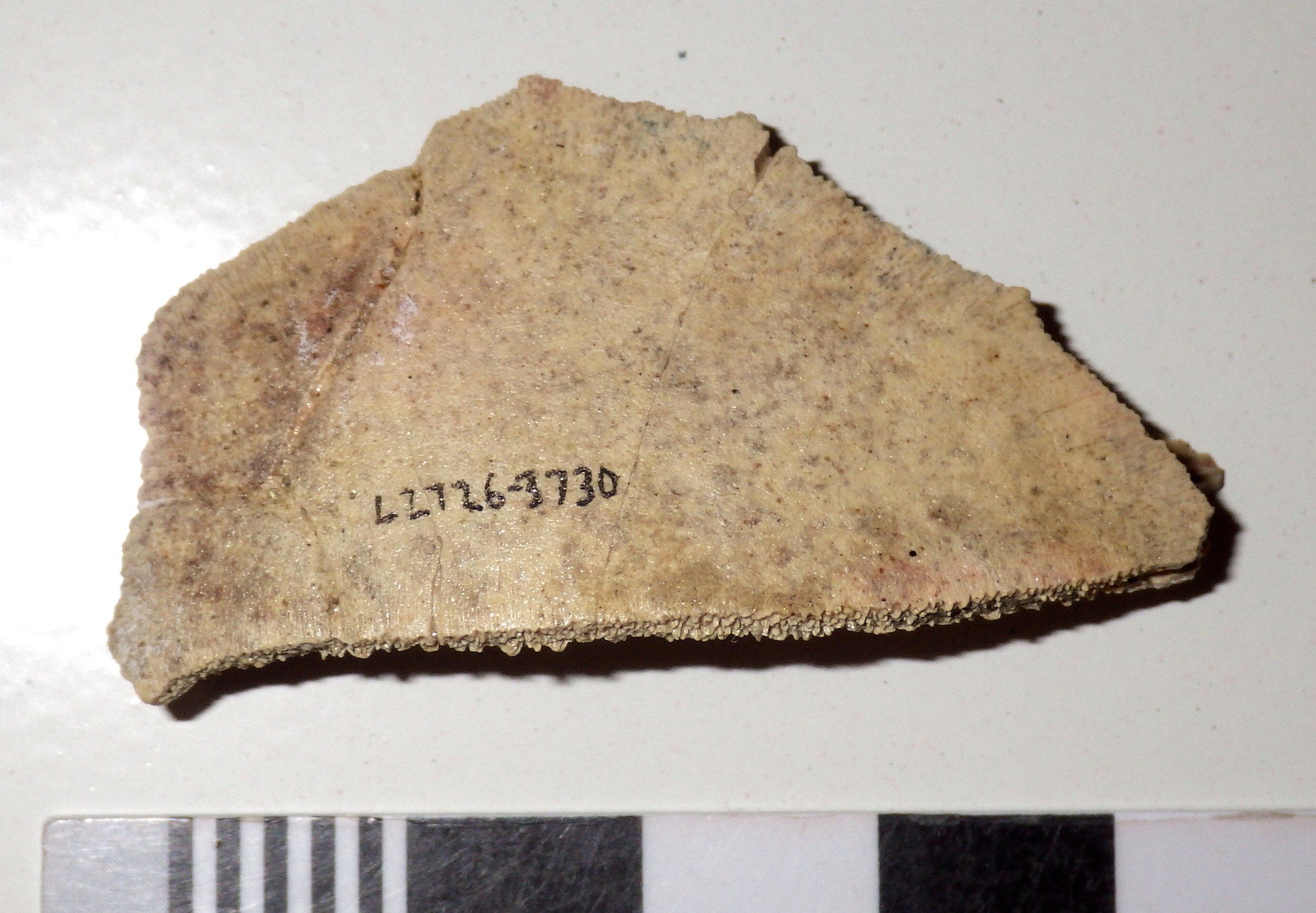 Fossil preservation is a tricky thing, and the variables involved in fossilization can have a major effect on what eventually gets preserved (a major subfield of paleontology, taphonomy, looks at this very issue). For vertebrates, one factor that can give you a high preservation potential is having a lot of bones, so that a large percentage of your body mass is more likely to survive. With their extensive bony shells, turtles should be a prime candidate for fossilization, and sure enough, large numbers were found in the Pleistocene Diamond Valley Lake fauna. Of course, having lots of bones is no guarantee that they'll survive in one piece; most of our turtle remains are fragments of the shell, and we have nothing even remotely approaching a complete turtle skeleton.Turtle shells have two main pieces, the carapace on the turtle's dorsal side and the plastron on the ventral side. The carapace and plastron, in turn, are each made up of numerous smaller bones. The piece shown above is from the carapace, technically called the first right costal, which formed the front right part of the shell. It's shown here in dorsal view; if the skeleton were complete, the turtle's skull would have been out of the image at the upper left. Here's a ventral view of the same bone (since this is from the carapace, it's like you're inside the turtle looking out):
Fossil preservation is a tricky thing, and the variables involved in fossilization can have a major effect on what eventually gets preserved (a major subfield of paleontology, taphonomy, looks at this very issue). For vertebrates, one factor that can give you a high preservation potential is having a lot of bones, so that a large percentage of your body mass is more likely to survive. With their extensive bony shells, turtles should be a prime candidate for fossilization, and sure enough, large numbers were found in the Pleistocene Diamond Valley Lake fauna. Of course, having lots of bones is no guarantee that they'll survive in one piece; most of our turtle remains are fragments of the shell, and we have nothing even remotely approaching a complete turtle skeleton.Turtle shells have two main pieces, the carapace on the turtle's dorsal side and the plastron on the ventral side. The carapace and plastron, in turn, are each made up of numerous smaller bones. The piece shown above is from the carapace, technically called the first right costal, which formed the front right part of the shell. It's shown here in dorsal view; if the skeleton were complete, the turtle's skull would have been out of the image at the upper left. Here's a ventral view of the same bone (since this is from the carapace, it's like you're inside the turtle looking out):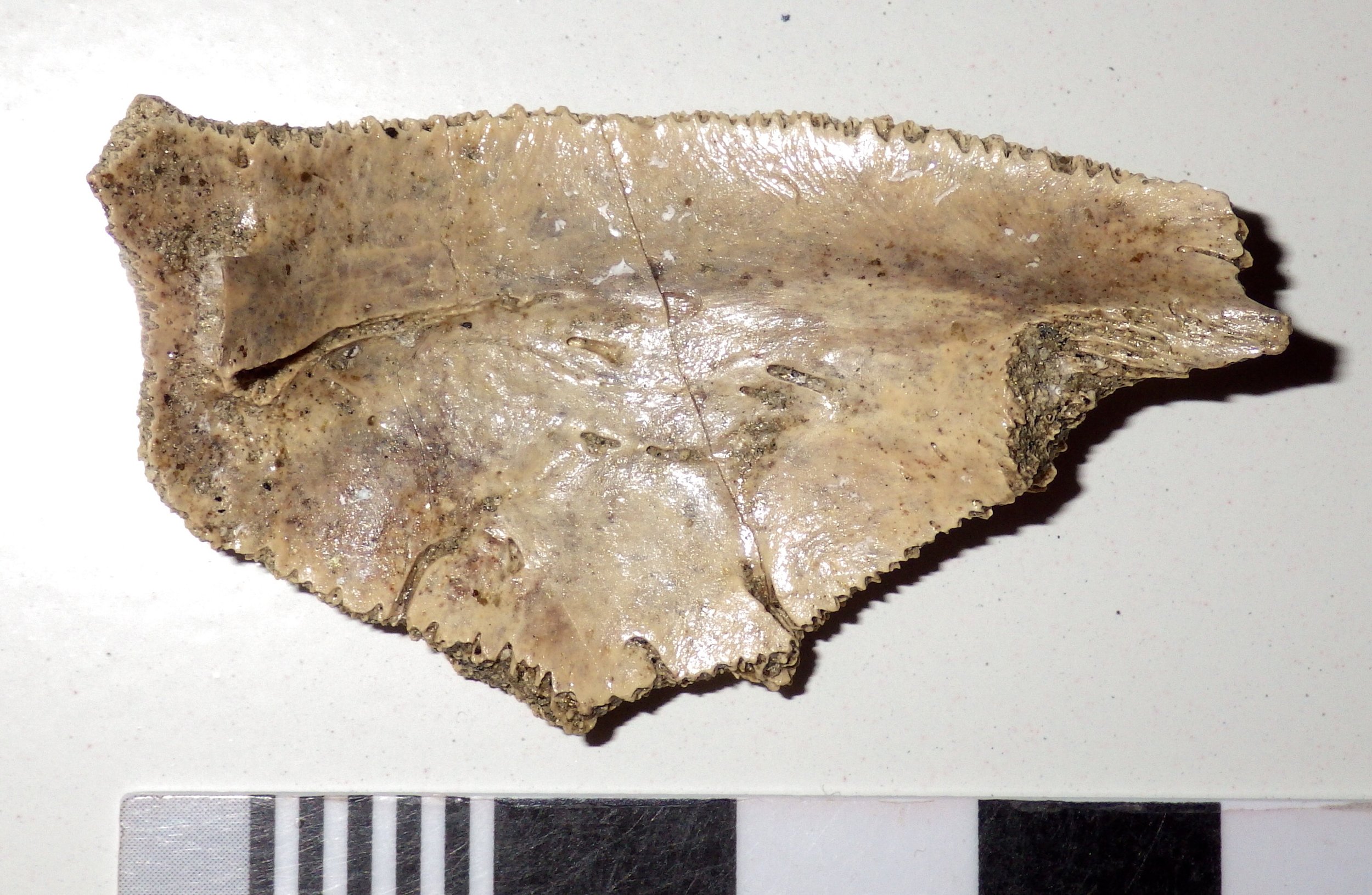 Most vertebrates that have bony armor (armadillos or crocodiles, for example) make their armor from dermal bones. These are bones that are embedded in the skin and generally have no direct connection to the rest of the skeleton. Many of the bones in a turtle's carapace are different in that they are attached directly to internal bones. The costal plates are attached to the ribs; this is more obvious in an oblique view of the ventral side of the bone, where the rib is clearly visible:
Most vertebrates that have bony armor (armadillos or crocodiles, for example) make their armor from dermal bones. These are bones that are embedded in the skin and generally have no direct connection to the rest of the skeleton. Many of the bones in a turtle's carapace are different in that they are attached directly to internal bones. The costal plates are attached to the ribs; this is more obvious in an oblique view of the ventral side of the bone, where the rib is clearly visible: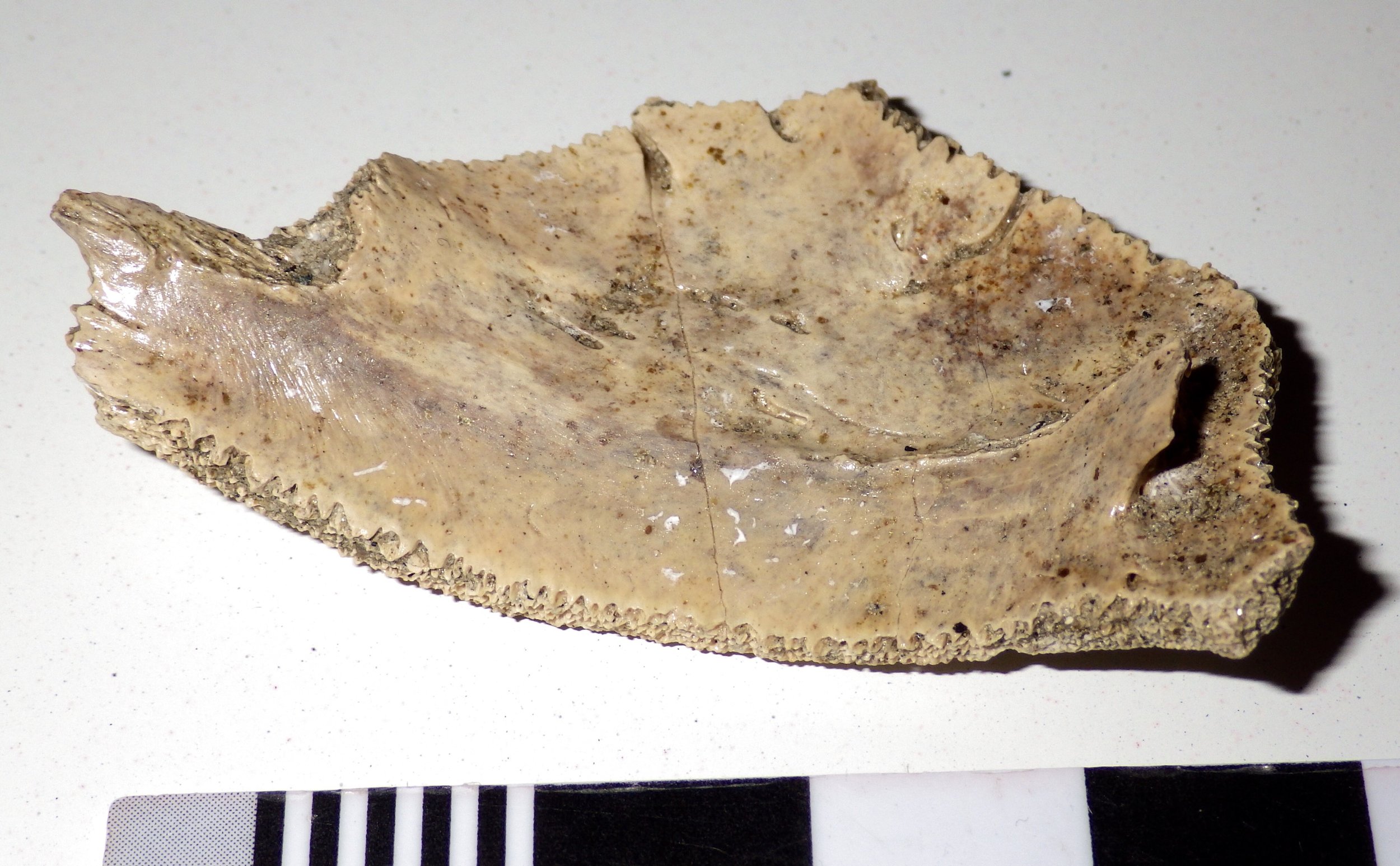 This particular costal bone is from a western pond turtle, Actinemys marmorota. These turtles are still found on the west coast, yet somehow I've never photographed one, even though I have dozens of turtle photos including every other genus in the family Emydidae. The closest relatives I've photographed are Blanding's turtle (Emydoidea blandingii) from the upper Midwest:
This particular costal bone is from a western pond turtle, Actinemys marmorota. These turtles are still found on the west coast, yet somehow I've never photographed one, even though I have dozens of turtle photos including every other genus in the family Emydidae. The closest relatives I've photographed are Blanding's turtle (Emydoidea blandingii) from the upper Midwest: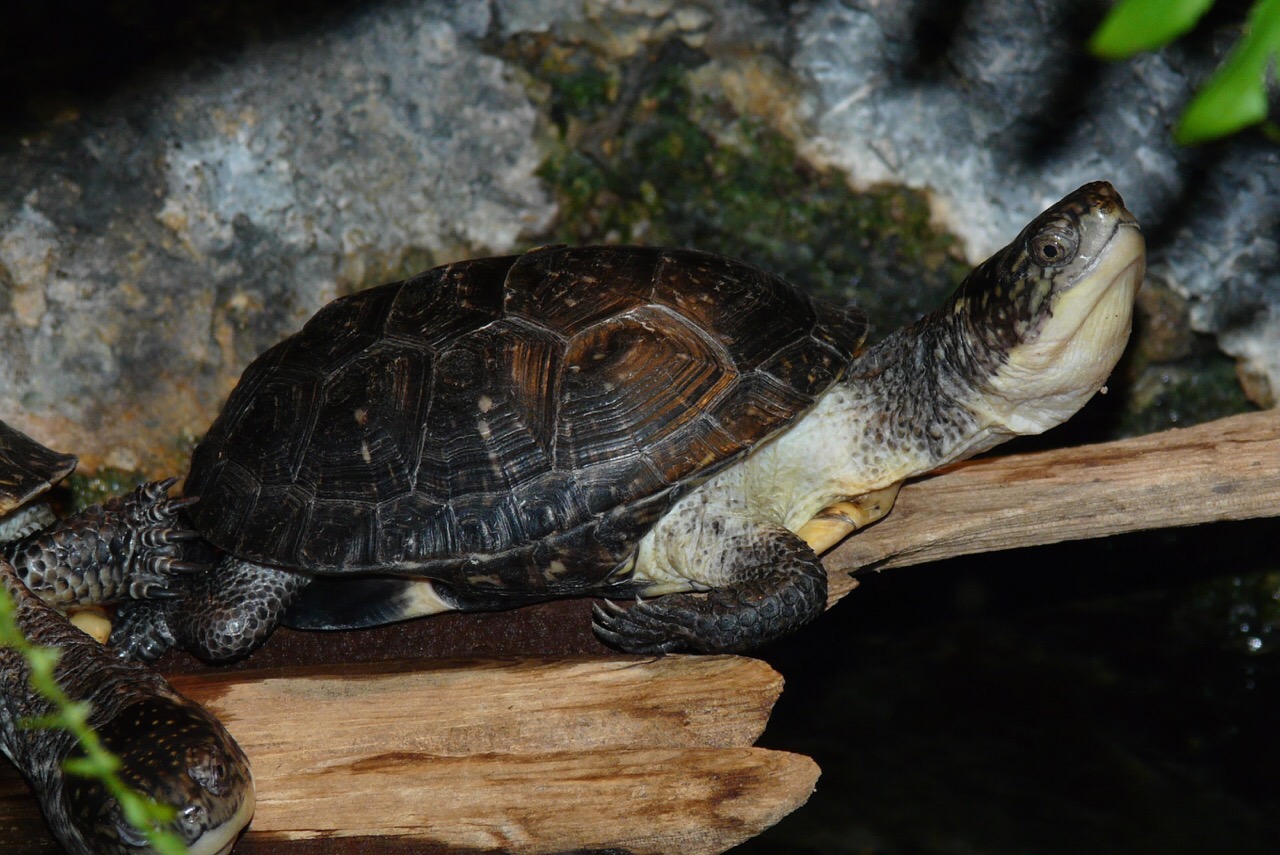 ...and the spotted turtle (Clemmys guttata) from the east coast:
...and the spotted turtle (Clemmys guttata) from the east coast: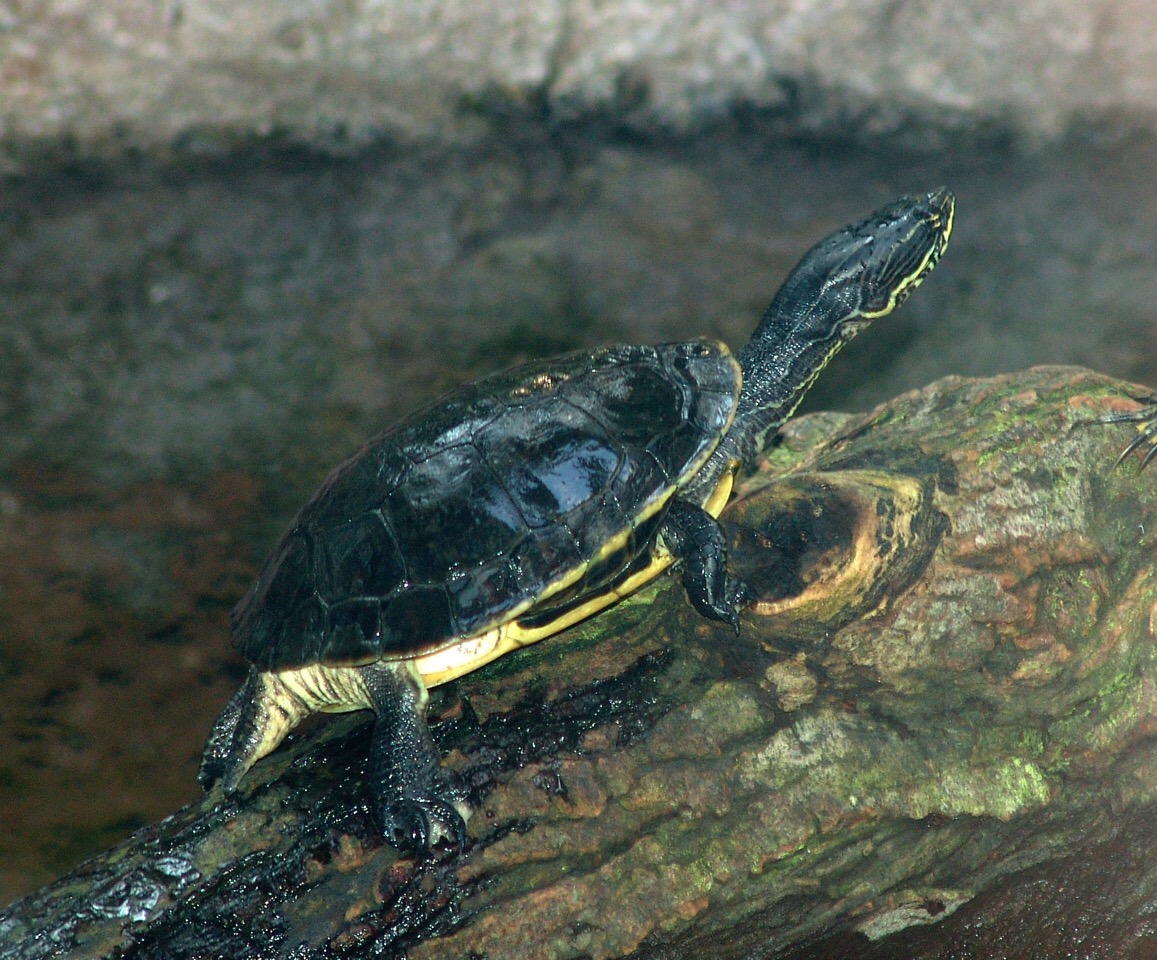 These three species are all closely related, and are in the same subfamily. In fact, until a few years ago Actinemys marmorota was placed in the genus Clemmys (our labels at WSC actually list these specimens as Clemmys marmorota); some workers have also proposed that Actimemys and Emydoidea in the same genus, Emys.
These three species are all closely related, and are in the same subfamily. In fact, until a few years ago Actinemys marmorota was placed in the genus Clemmys (our labels at WSC actually list these specimens as Clemmys marmorota); some workers have also proposed that Actimemys and Emydoidea in the same genus, Emys.
